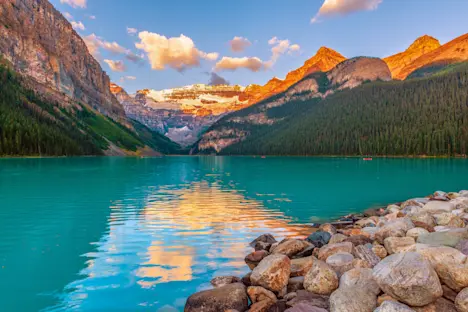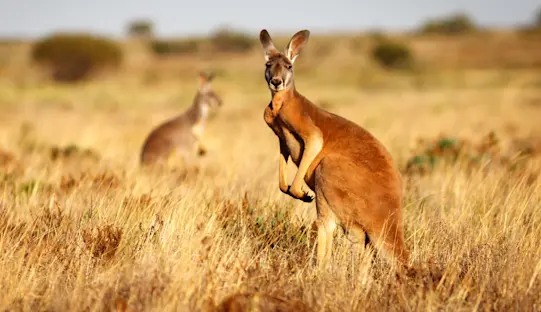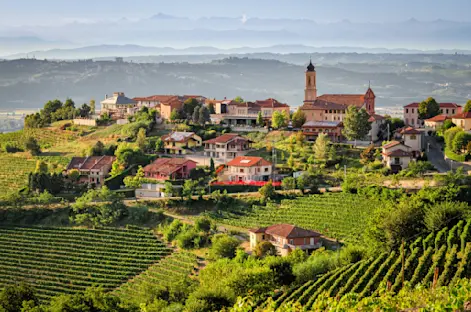The grasslands of Kenya’s Maasai Mara sweep you off your feet with stunning scenery and iconic wildlife. During the Great Migration, millions of wildebeest and hundreds of thousands of zebras and other ungulates move through the landscape, feeding on the grasses and, in turn, providing food for hungry carnivores.
In addition to the herds that follow the rains, many other species rely on the grasslands of the Mara for sustenance. It’s incredible to imagine the number of mouths this landscape feeds!
Here are just a few of the winning wildlife smiles and toothy grins of the Maasai Mara:
Zebra

© Danielle Brigida / WWF
Zebras have quite the smile! Most zebras have a total of 40 adult teeth (Grévy’s zebras have 42), which emerge when they are around two years old. The grasses of the Mara make up more than 90% of their diet, though during dry periods they often have to forage and dig for food.
Because most of the grass that they eat is tough and dry, zebra teeth are adapted for pulling and chewing. Zebras have hypsodont teeth: high-crowned teeth with enamel that extends past the gum line. These teeth continue to erupt throughout most of the zebra’s life as the surface is worn down by chewing.
Zebras lack the four-chambered stomachs of ruminants like giraffes and antelopes, so they must eat several small meals daily. They eat the tall, coarse grasses, leaving the rest for others, like wildebeests, who can only eat shorter grasses. This relationship, known as mutualism, works well for both animals and is one of the reasons you’ll see them traveling together.
African Wildlife Guide: Zebras
African Savanna Elephant

© Danielle Brigida / WWF
Being the biggest terrestrial animal on Earth means you have to eat a lot! African savanna elephants can consume about 220 pounds of food and 26 gallons of water every day. They have 26 teeth in total, including two upper incisors and 24 molars. Their molars are perfectly suited to grinding and mashing vegetation. Interestingly, they can be replaced up to six times throughout their lives, with new teeth growing in at the back of the mouth and moving forward.
An elephant’s tusks are actually teeth—the upper incisors—but since they emerge from the skull, they’re called tusks! Just as humans are left or right-handed, elephants are left-tusked or right-tusked.
African Wildlife Guide: Elephants
Leopard

© Danielle Brigida / WWF
Leopards hunt a wide variety of animals on the Mara and take full advantage of the incredible landscape. These carnivorous big cats have 32 teeth, four of which are very long, pointed canine teeth. Although humans also have sharp canine teeth, we have smoother molars. Leopards, however, have sharp teeth all the way to the back of their mouths, called carnassial molars, to shred the tough skin and muscles of their meals.
African Wildlife Guide: Leopards
Waterbuck

© Danielle Brigida / WWF
Waterbuck are large antelope that use their fine-looking chompers for grazing on medium and short grasses rich in protein. Living near the water, these ungulates browse the grasses and leaves that are passed over by other herbivores.
They have glands that produce a musky odor that acts as a bug repellent (you never see ticks on waterbuck). It also makes waterbuck fairly unappetizing to predators. In fact, the waterbuck’s pungent odor ensures they’re one of the last animals on the menu for the Mara’s predators!
Nile Crocodile

© Danielle Brigida / WWF
Nile crocodiles are well-fed by life in the Mara, particularly during the migration. They feed by grabbing and holding onto their prey with their strong jaws and sharp teeth. Nile crocodiles have a bite force that’s measured to be around 5,000 pounds per square inch (PSI). Compare that to a human’s bite, which is only about 162 PSI!
Both crocodiles and alligators are known for their mesmerizing “death rolls.” They use this powerful, twisting maneuver to subdue, kill and dismember their prey by rapidly rotating their bodies in the water, often after a powerful bite.
African Wildlife Guide: Crocodiles
Giraffe

© Danielle Brigida / WWF
Giraffes feed on what’s out of reach for most of the Maasai Mara’s animals. But their long necks aren’t their only advantage in their effort to eat leaves off tall trees. Their tongues can measure up to 21 inches long! Giraffes also lack front teeth on the top of their jaw, allowing easier access for their tongue to reach out and grab leaves. They do have bottom teeth, a hardened dental pad and plenty of molars at the back of the jaw.
Surprisingly, giraffes have the same number of teeth as humans—even without upper front teeth!
African Wildlife Guide: Giraffes
Brown Parrot

© Danielle Brigida / WWF
Brown parrots feed on seeds and fruits in trees found throughout the Maasai Mara region. Cracking open pods and seeds gives them an advantage over species that can’t get to the fruit. The brown parrot is an opportunistic bird, often feeding on the fruits of sausage trees (pictured above), jackalberry trees, leadwood trees and sycamore fig trees.
Rüppell’s Vulture

© Danielle Brigida / WWF
Rüppell’s vultures play a vital role in the Mara ecosystem: clean-up crew! They eat carrion and feed only on recently deceased animals. By quickly consuming the meat and bone fragments before they rot, they help prevent the growth of dangerous bacteria and viruses, keeping the Mara a more healthy and sanitary environment. Since large herbivores often die at night, safari-goers often spot these vultures and other scavengers enjoying early morning feasts.
Lion

© Danielle Brigida / WWF
Like most carnivores, lions rely on their strong teeth. These big cats have three types of teeth: their incisors, their canines (which they use to grab and hold onto prey), and their carnassial molars (which they use to shear meat from bone). A lion’s sharp canine teeth can be up to 10 centimeters long! They are skilled hunters and play an important role in this ecosystem.
African Wildlife Guide: Lions
There are many more mouths of the Mara, taking on all shapes and sizes and feeding off the gifts the landscape offers. This region is stewarded by the Maasai people, who have lived alongside the animals for thousands of years. They are one of the main reasons it still exists. Some of the road networks in the Mara and the Serengeti were at one point Maasai routes for grazing. They continue to play a vital role in protecting and sustaining the Mara as we know it.
Meet iconic African wildlife of and explore the Maasai Mara for yourself on our Pride of East Africa adventure, The Great Kenya Migration Safari or our photography-focused Kenya Migration Photo Expedition.
By Danielle Brigida, Senior Director of Wildlife Communications & Strategy at World Wildlife Fund (WWF)



































